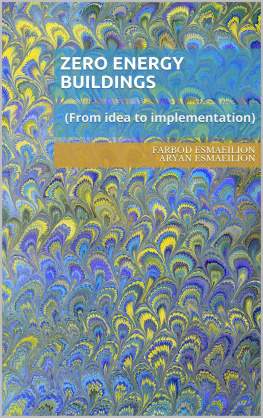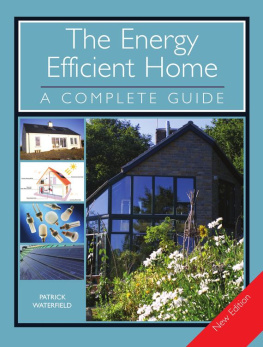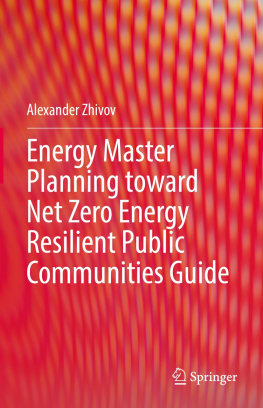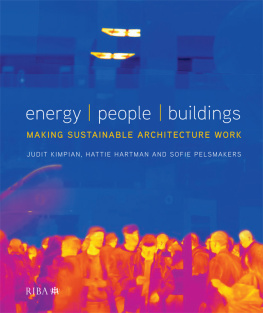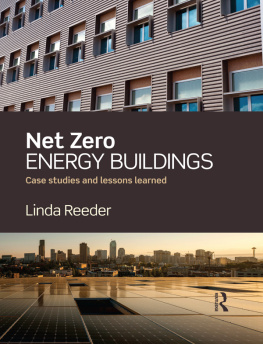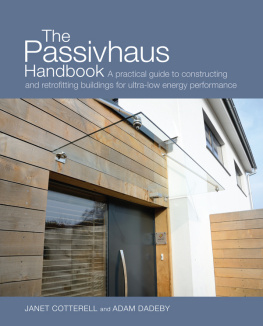Zero Energy Buildings
(from Idea to Implementation)
By: Farbod Esmaeilion (Eng.), Aryan Esmaeilion (Eng.)
While every precaution has been taken in the preparation of this book, the publisher assumes no responsibility for errors or omissions, or for damages resulting from the use of the information contained herein.
ZERO ENERGY BUILDINGS (FROM IDEA TO IMPLEMENTATION)
First edition. September 20, 2019.
Copyright 2019 Farbod Esmaeilion and Aryan Esmaeilion.
Written by Farbod Esmaeilion and Aryan Esmaeilion.
10 9 8 7 6 5 4 3 2 1
Dedicated: to my parents. They always gave me the chance to choose.
You cannot hope to build a better world without improving the individuals. To that end, each of us must work for our own improvement. Marie Curie
Foreword:
This book examines the prevailing conditions in the analysis of zero-pure energy buildings (ZEBs) with advanced technologies selected. These studies have indicated that the paths to achieving zero energy are numerous and varied, but they must be carefully customized for the type of building desired and its performance. The key to achieving the zero energy goals is to benefit from the knowledge, technologies, and resources available in energy and civil engineering. With the right combination of effective parameters in the design and evaluation of buildings, pollutants can be reduced in addition to energy consumption.
Farbod Esmaeilion, Eng. |
Aryan Esmaeilion, Eng. |
K eywords: Zero Energy Building, Energy Analysis, Energy Audit, New Constructions
About the authors:
Farbod Esmaeilion is an author in the field of renewable energy. He has various researches in the fields of energy analysis and optimization of energy systems. He is energy system engineering graduated and has a rich background in the field of converting waste to energy.
Aryan Esmaeilion is graduated in civil engineering - construction management field. He is a researcher in the field of zero energy buildings, efficient design and green architecture. He is a member of the Iran engineering council and has experiences in monitoring and implementing the innovative structures.
Table of Contents
Chapters | Pages |
1: Introduction | ................................. | |
2: Diverse aspects of Zero Energy Buildings | ................................. | |
3: Solutions to generate renewable energy | ................................. | |
4: Zero energy buildings (ZEB) | ................................. | |
5: Conclusion | ................................. | |
References | ................................. | |
1. Chapter 1 - Introduction
1.1 Introduction.
T oday, security, reliability , and availability of energy resources are essential for the sustainability and economic development of societies. Climate changes, insecurity of energy carriers (often non-renewable) as well as the growth of energy consumption have created many challenges in the field of energy and environment. Therefore, creating the right contexts for energy consumption as well as focusing on how energy is consumed can be considered as an effective way to overcome these challenges. This process is also important in the process of dealing with environmental issues. Rationally increasing energy efficiency is directly related to the reduction of pollution emissions. Also, the use of renewable energy or nuclear energy can be effective factors in reducing carbon dioxide emissions. Increasing greenhouse gases on the one hand and reducing renewable energy sources, on the other hand, play a decisive role in determining countries' energy strategy. As we consider, environmental issues and the optimal use of energy resources are closely linked. Therefore, in recent years, ideal concepts such as the ZE concept have been adopted by different countries to reduce dependence on non-renewable energy sources, both in terms of cost, environmental pollution and limited resource utilization and multi-resource utilization are not located.
1.2 The Global Approach to Energy
Increasing energy demand, limiting fossil energy resources and increasing prices, and the uncertainty and stability of the energy market in recent decades, together with the issue of pollution and global warming, are the basis for a new approach to energy. Two new solutions have been considered in the new perspective: 1) optimization of consumption (demand reduction or control) and energy production 2) use of alternative energy sources, mainly renewable energies with a view to optimizing energy consumption and production. It is very important. Beyond all its denial of conservation of fossil energy sources by reducing the cost of breeding them, it provides and provides an appropriate context for the exploitation of renewable energy sources. In fact, in order to use renewable and renewable energy, energy demand must be reduced as much as possible. European and American countries will make major changes to their energy regimes by 2030, according to a plan. But the key point is that what gives these countries the power to maneuver on the use of various energy sources, in addition to economic and technological issues is their long-term experience in generating and consuming energy. For example, building green towns, using DH systems extensively, energy-efficient buildings, cultural contexts, and community awareness, etc. give these governments the power to maneuver over energy resources. For example, the energy plan for the US building by 2020 is defined in Figure 1.1.

Figure 1.1 Energy plan for the US building by 2020 [1]
Apart from the issues related to power generation and transmission, power optimization can have a significant impact on reducing dependence on energy sources. There are basically two ways to reduce energy consumption: 1) Demand Reduction: As a simple example, consider the amount of hot water consumed in the home. By reducing tones to a few degrees at hot water temperatures, a significant reduction in energy demand can be achieved. Reducing demand requires culturing and changing standards and quality of life. For example, in the winter season, energy demand can be reduced by lowering internal heating temperatures and using proper clothing. To reduce demand, one must first identify the dominant consumption pattern and then propose appropriate solutions to it and realize their feasibility. In fact, to change some of these methods, it is necessary to change the quality of life. 2) Reduction of energy loss: It is very important to use new methods to reduce energy loss.
In this case, the idea is that: (a) when using limited and dispersed generators, the power generation and heat generation of a complex such as a building complex takes place within the same complex; the explanations given in the introductory section seem logical. The implementation of these methods has been successful in various countries of experience. In fact, the solution to the problem is that in order to overcome the energy crisis and to reduce greenhouse gas emissions in offices, residential complexes, universities or industrial residential settlements needs energy within the same complex. In this case, not only will energy and renewables be reduced by reducing demand and supply, but CHP and DH systems can be used more extensively. In this way, in addition to virtually no transmission network failure, the security of power needed supplies would be higher. It is a vision that will change the quality of life and prepare us for a new and completely different era. This is an expression of the concept of ZEB.

